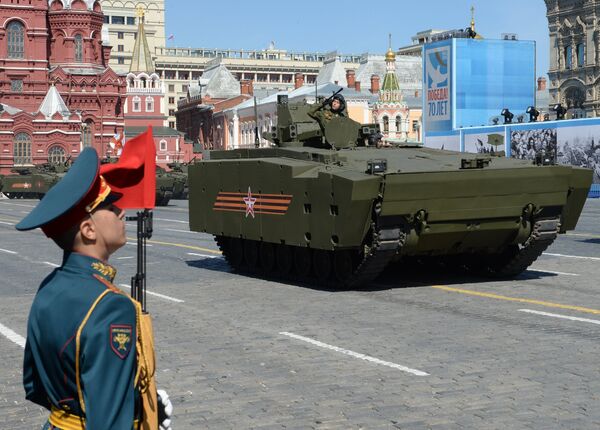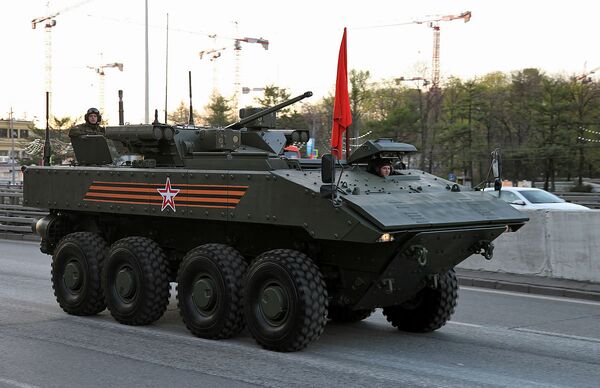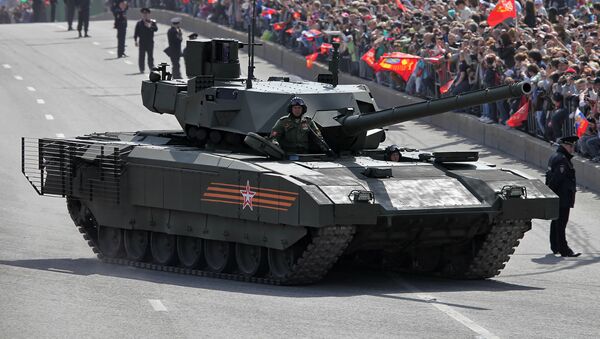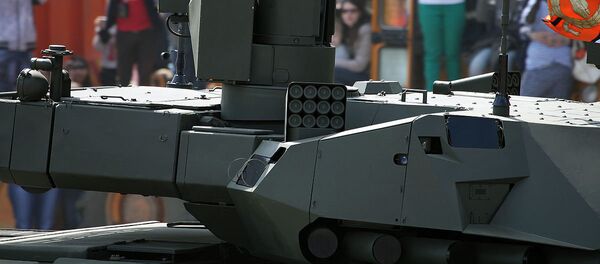Also known as bar armor, cage armor and standoff armor, slat armor is specifically designed to protect armored vehicles against anti-tank rocket-propelled grenade attacks.

"The decision on the development and subsequent use of slat armor has already been made", the source said, adding that the Russian Defense Ministry is currently considering what type of slat armor is needed for certain new generation armored vehicles being produced for the Russian Armed Forces.
In addition to the T-14 Armata tank, a whole array of state-of-the-art Russian armored vehicles is expected to be equipped with slat armor.

These include the Kurganets-25 infantry fighting vehicle, the Bumerang armored personnel carrier, the Platforma-M multi-purpose robotic system, the Dragun infantry combat vehicle, the Taifun wheeled armored vehicle, the Ural-VV wheeled armored vehicle and the Tornado multiple launch rocket system.

Slat armor takes the form of a rigid slatted metal grid fitted around key sections of the vehicle, such as its engine and transmission.
The grid disrupts the shaped charge of the warhead by either crushing it, preventing optimal detonation from occurring, or by damaging the fusing mechanism, preventing detonation outright.
In Russia, slat armor has been developed by the Steel Scientific Research Institute, Izvestia said, referring to the company's representative Yevgeny Chistyakov.

"Slat armor's efficiency is lower than that of dynamic protection, but slat armor is much easier [to produce] and cheaper. These metal grids help protect military equipment from cumulative grenades, something that especially matters during an urban combat when [a vehicle can be fired upon] from any direction," Chistyakov told Izvestia.
This is why complex solutions should be taken when it comes to protecting armored vehicles, Viktor Murakhovsk, editor of the Russian magazine Arsenal Otechestva said in an interview with Izvestia.
He explained that when in action, the crewmembers of an armored vehicle typically die from the impact of fragments rather than that of a cumulative jet.




